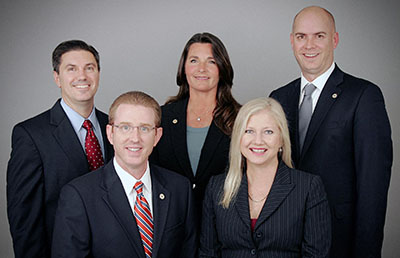In an impassioned discussion that went back and forth for almost an hour, the Wellington Village Council voted to slightly cut its proposed property tax rate Tuesday, Sept. 10 at a meeting that included the first of two formal budget hearings.
Village staff initially recommended a higher rate, but 2.48 mills was a compromise number agreed to during a meeting in July that would still allow a 25 percent cushion of reserves for the next five years.
The rate of 2.48 was the TRIM (Truth in Millage) rate that was sent to property owners over the summer. Wellington could not raise the rate once the notice went out, but it could lower the rate.
Mayor Anne Gerwig pushed for the council to lower the rate to 2.45 mills. Eventually, the council agreed unanimously to a rate of 2.47 mills when Councilman John McGovern said he would be willing to vote for a lower rate, but not the rate Gerwig wanted.
According to Gerwig, the change will save residents money on their taxes while still giving them the village services they are accustomed to receiving.
The public hearing on the proposed budget for the upcoming year was presented to the council by Director of Administrative & Financial Services Tanya Quickel, who gave a PowerPoint presentation showing how the millage rate will be affected over time.
Councilman Michael Drahos explained the rationale of staying with a rate of 2.48 mills for five years because it was the plan that the council agreed upon last year.
“We can lock in at this rate and not have to ask the residents for an increase, and still keep our reserves where they need to be. Is this correct?” Drahos asked Quickel.
Quickel explained that the tax rate should be a number that can stay the course over a projected amount of time.
“Our goal is to try to smooth the tax increases in the millage rate so that there are no huge surprises for people,” she explained. “That’s what we look forward to doing in the planning and making the assumptions we make.”
In fiscal years 2023 and 2024, the millage rate will need to be adjusted at 2.48, but at 2.47, the adjustment would need to take place sooner in order to maintain healthy reserves.
McGovern asked Quickel what would happen at that point.
“We will be looking at the fund balance falling below the 25 percent, which is your minimum for the policy of maintaining a 25 to 30 percent fund balance,” she said. “Potentially, it will fall below that. The policy states that the millage will be adjusted to bring it back to a minimum of 25 percent fund balance. You are looking at millage increases potentially at that time.”
Gerwig said that there is plenty of extra money in the budget.
“At the end of the year last year, we had $20 million unassigned. I know there are places in this budget that we can do better,” Gerwig told Quickel. “I feel there are residents wanting that. You can say no one called you, but we have all received e-mails saying, ‘I’ve lived here a long time and my bills are going up. I don’t see any reason for them to continue going up.’ That’s why I am asking for 2.45. I know very well that we try to project the future, and that you like to have some cushion, so that when we move forward, nothing is drastic. But I have also seen us do better on less.”
McGovern asked Gerwig why 2.45 versus 2.43.
“I am saying I don’t want to go with the standard,” Gerwig said. “I’m not suggesting we go to rollback. I think we can bring it down and keep our residents from having to pay more and more every year.”
McGovern said that a rate of 2.47 is a number that resonates with him.
“The point I am trying to make is this, for the last 10 years, this village has been able to operate on an average 2.47 millage rate. We have not been at 2.45 since 2016. I think we can live at 2.47 for the next five years, because if we can live at 2.48, we can live at 2.47.”
Also, on the agenda was the final reading an ordinance amending the upcoming municipal election date and qualifying period.
The Palm Beach County Supervisor of Elections Office requested that all municipalities move the dates of their municipal election to March 17, 2020 to line up with Florida’s presidential preference primary.
The council agreed to the change unanimously. Approval means that the qualifying period for candidates will be from noon on Tuesday, Dec. 3, 2019 to noon on Tuesday, Dec. 17, 2019.








